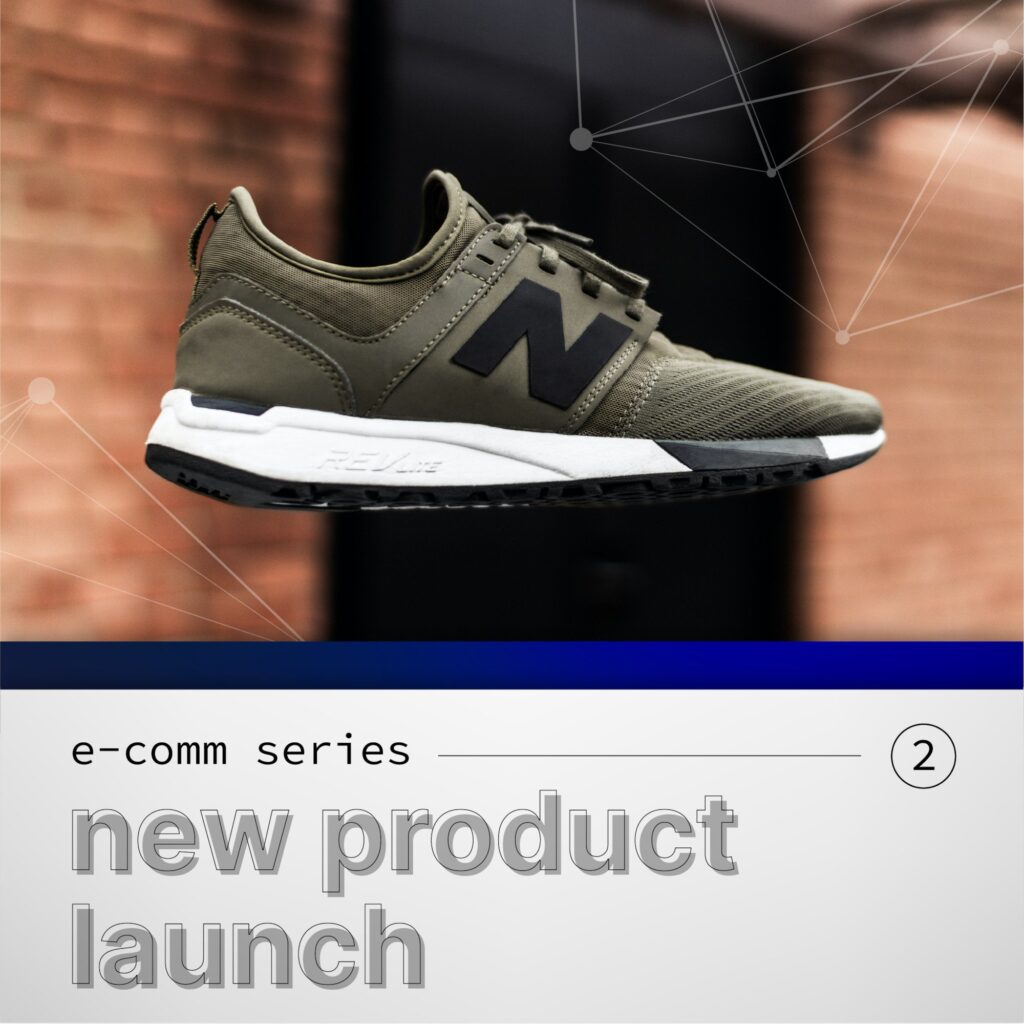
By Danielle Whetstone
The unfortunate reality is that not every new product launch hits the mark. Cruise the discount aisle at your local grocery store and you’ll find plenty of examples of new products that didn’t quite land. Whether it was a miss in anticipating consumer trends, an inflated price point, or a lack of planning, there’s a lot you can do to ensure your new venture doesn’t fall flat with your customers.
While product development should not be rushed, neither should the launch. The success of a new product often directly correlates to how well you prepare, and that means your marketing should start months in advance of the release. In this blog, we’ll dive into how e-comm businesses should use the basic elements of marketing: content, paid ads, email, and website, to launch new products with a blast!
Content
As 19% of consumer purchases are influenced by Facebook posts alone, leverage your social media presence to create buzz about your upcoming product. No matter how amazing your new product is, people won’t buy something they’ve never heard of. Use your social platforms to showcase what you have to offer and the problem it solves. Get creative by revealing the inspiration for your product, behind the scenes production, demo how it works, or what makes it better than its predecessor.
If you’ve stayed on top of creating consistent, engaging content on your social channels, you’ll be in a great position to reach a pool of consumers who are already fans of your brand; and if they’ve had a good experience, they’re more likely to share the news with friends. Collective Bias’ research shows that 70% of millennial consumers are influenced by the recommendations of their peers.
As reviews and social proof become ever more important, we’ve seen great success with User Created Content – short videos of consumers using the product and sharing their thoughts and endorsement. As you get closer to launch and have prototypes available, learn how you can get your products in the hands of select consumers so they can boast about your brand on social media.
Paid Ads
While social content keeps you connected to your followers, the real beauty of social media paid ads is the ability to reach beyond that audience and target future customers. Those who might have never heard of you, but based on behaviors and demographics, would likely be interested in what you have to offer.
This is where the power of lookalike audiences really comes into play. Much like how a playlist is crafted from one song, lookalike audiences use the data from your current customer list and allow you to find similar users to deliver your ads. And an organic content and social paid ads strategy really work in tandem to drive engagement at every level.
Google search ads, with a well-developed keyword, strategy are another essential element to your marketing. When you’re crafting your keyword search terms, remember to put yourself in your buyers’ shoes. That means using terms you may not normally use to describe your new product, but instead words a consumer would use to find the item you’re selling.
While email marketing has been around for a long time, it’s still a highly effective tool, especially for driving sales. According to Constant Contact, 60% of consumers say they made a purchase as the result of a marketing email they received. With the ability to customize emails based on action (purchase, abandoned cart, browsing…) or demographics, email marketing is a low-cost, high-ROI marketing option that is both fast and effective.
Use email to notify customers of your new product and offer an insider discount, early bird pricing, or pre-sale options for those who have shown loyalty to your brand already. As a consumer, it can be frustrating when discounts are only reserved for new customers — make sure you reward your previous purchasers who have put you on the map by offering something special just for them.
Website
A beautiful, efficient website is a must, no question, but often a brand’s website can take a back burner to all the other demands of running a business. If you’ve been a little lax with your site and have taken a “set it and leave it” mentality, the launch of a new product is the perfect time to revisit one of your most important assets and ensure that it’s optimized to the fullest.
Take special consideration regarding your load times. If your site is laggy or is too hard to navigate, you’re sure to lose sales. Time-starved visitors simply don’t have the patience to wait on an inefficient website, no matter how cool your product is. And it must be optimized for mobile (85% of American adults have smartphones; no excuses there).
We’ve all been to sites that explain their product or service in great detail, and yet you still have no idea what it is or how it works. If you have a new product on the horizon, you’ll want to have it displayed front and center on your website and highlight why it’s so amazing. Use language that’s easy to understand and clearly differentiates it from others on the market. No jargon and no technical language only the development team understands.
On the backend side, check in on your SEO efforts to ensure you’re leveraging every possible avenue for site traffic. Make use of page titles, meta tags, and alt tags on every page and image of your site to drive more traffic. For e-commerce brands whose website is the lifeline of their business, invest ample time into making sure your site is ready for something new.
A new product is exciting! Not only does it mean a new chapter for your business, but it’s an opportunity to expand your reach to a new group of consumers. But planning is crucial. While you may be anxious to get your product out to the masses, a strong foundation of marketing prior to your launch can make the difference between trending or finding your beloved new product amongst the clearance items.
If you’re looking for expert help for content, paid ads, email marketing, or website design, C Squared Social has got you covered. With 10 years of experience, we’re experts in all things digital. Let’s talk!



